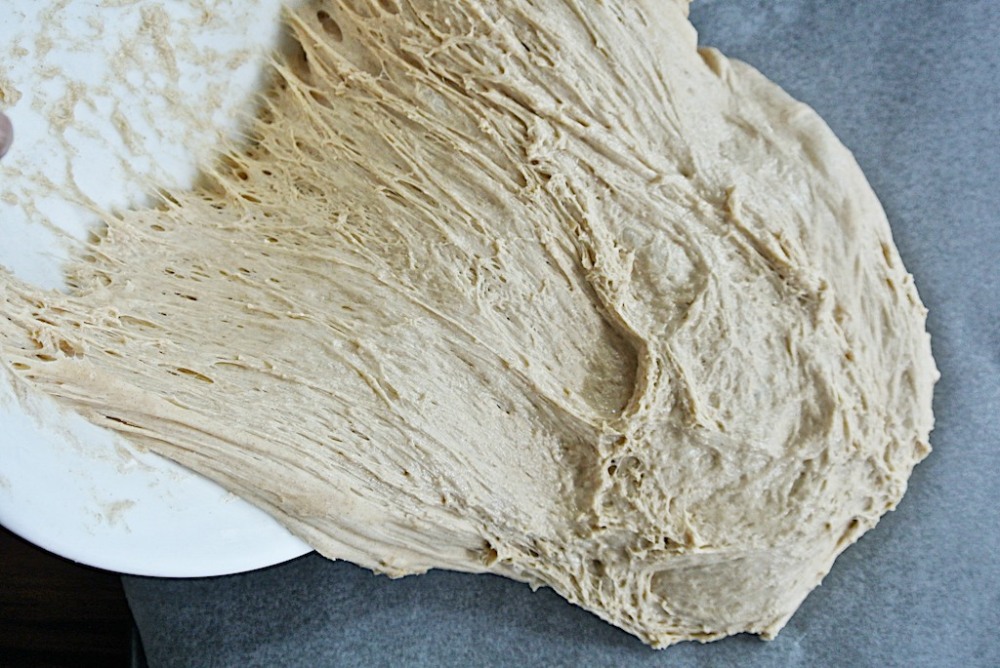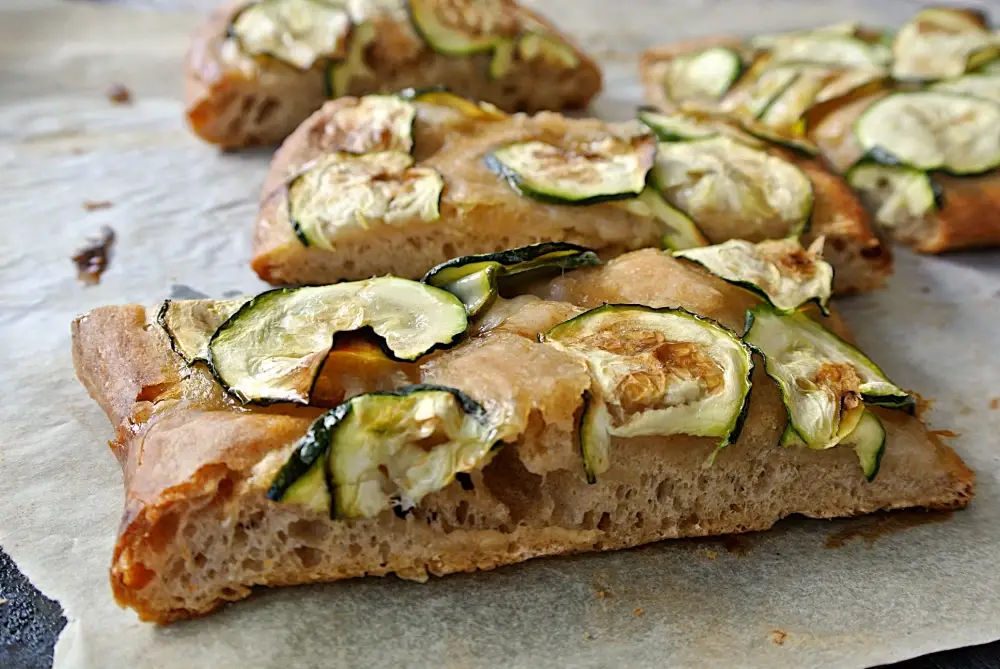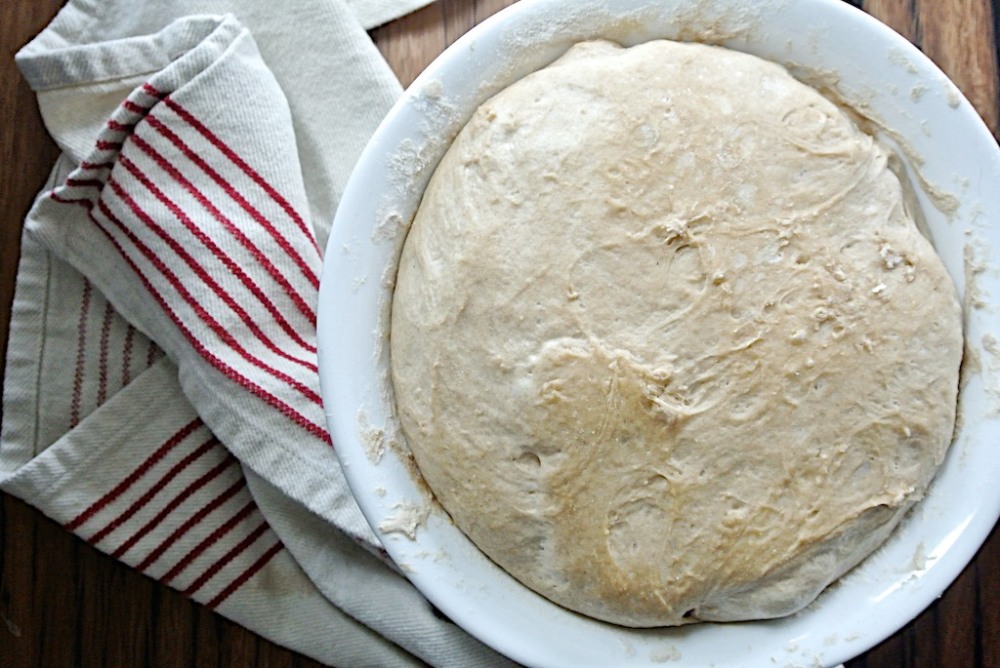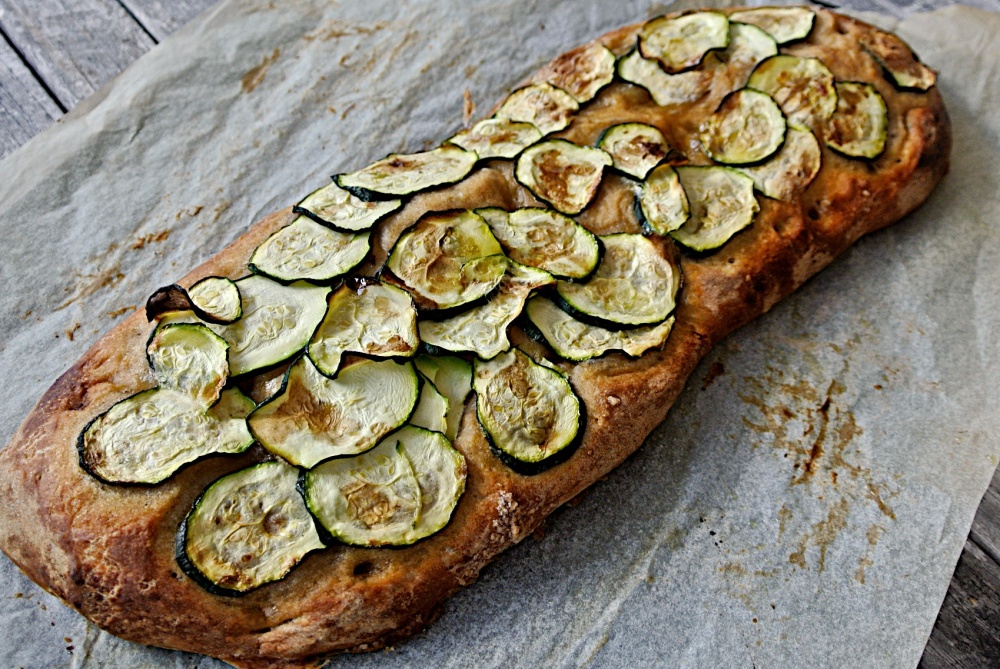No-knead Spelt Focaccia with Potato and Zucchini
No-knead Spelt Focaccia with Potato and Zucchini
Move over, white flour! The more recent diets trends have cast the spotilght on an ancient grain that has been enjoying a new-found popularity amongst home-bakers and those with a knack for healthy eating. Spelt, or dinkel wheat, contains a higher percentage of protein than wheat and enough gluten to be used in place of white flour in any type of bread making. The flavour is nuttier and more robust than that of wheat, something I have developed a preference for. Don’t get me wrong, I do have a soft spot for the look and taste of a straight-forward, honest white sourdough (in spite of the recent anti-white wheat trends…), but it excites me greatly to know that there are other flours out there I can experiment with in my quest to become an expert home-baker. Even my most resolute I-don’t-eat-starch friends had to reconsider once presented with these foaccias. I observed them with beamy eyes as their resolve crumbled, one savoury mouthful at a time…

INGREDIENTS
makes 2 large Focaccias
-
200 gr (1-1/3 cup) of baker’s flour (strong white flour)
-
200 gr (1-1/3 cup)of spelt flour
-
100 gr (2/3 cup) of wholemeal spelt flour
-
1/2 teaspoon of yeast
-
340 (1-1/3 cup) ml of water
-
2 tablespoons of extra-virgin olive oil
-
2 teaspoons of salt
-
a pinch of sugar
-
2 zucchini, thinly sliced
-
1 medium potato, peeled and thinly slices
-
1 medium onion, thinly sliced
-
3-4 tablespoons of extra-vigin olive oil
HOW TO
1.Mix flour, water and yeast together with a wooden spoon until combined. Add salt and mix well. Your mixture will look and feel quite sticky. Cover the bowl with cling wrap and let it prove for 10/14 hours at room temperature. The dough will look bubbly, wet and it will have grown in size considerably. At this point, you can use the dough as your focaccia base or you can rest the bowl in the fridge, well covered with plastic film for up to 5 days. The flavour and structure of the dough will improve the longer you slow prove it. The dough used for the focaccias pictured here had been in the fridge for 2 days after the long fermentation at room temperature.
2. Preheat you oven to 220 C (430 F). While the oven is heating, cook the sliced potato and onion in a little olive oil until they are soft but not completely cooked through. Season with salt and set aside.
3. Prepare two oven trays lined with baking paper. Tip half of the dough onto each tray, spread the dough with wet hands to the deisred shape. Using a rolling pin won’t work as the dough is very wet. Be mindful when manipulating the dough not to burst the air bubbles that will have formed during the slow fermentation. Those coveted air pockets hold the secret to a light-as-a-feather crust.
4. Top one base with the sliced zucchini, a drizzle of extra-virgin olive oil and little salt
5. Top the second base with the softened potato and onion. Add a little rosemary, if liked. Rest the focaccias at room temperature for 30 minutes.
6. Bake for 20-25 minutes, or until the crust is caramel brown and the bottom is crisp. Serve warm or at room temperature.
Silvia’s Cucina is on Facebook, Twitter, Pinterest and Instagram
This site contains product affiliate links. We may receive a commission if you make a purchase after clicking on one of these links.








